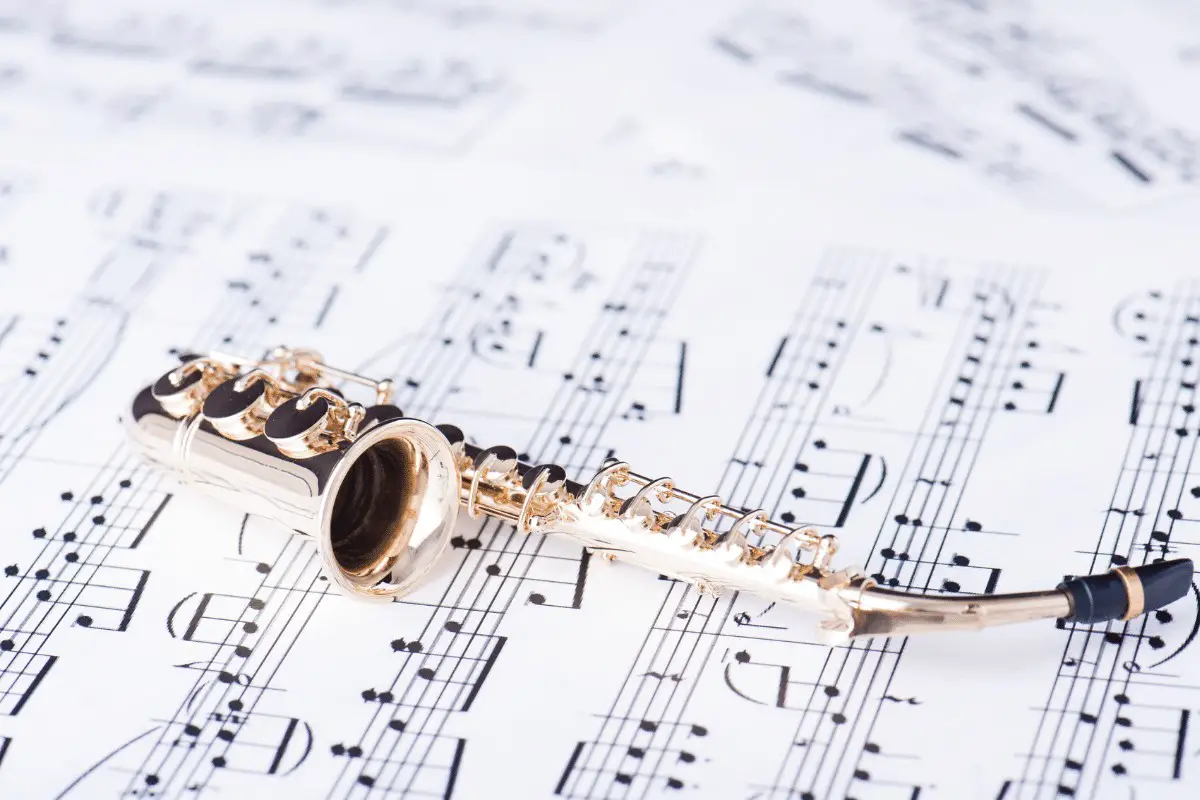Many people start playing the saxophone on the alto first, but in time, a lot want to try something new, and switching to the tenor is the next logical step.
But it’s daunting for many folks; to many, it seems like you’re learning a brand new instrument.
It’s not so hard, but there are some tips I’ve collected from my own experience and speaking with band directors and sax players.
So without further ado, here are our top 9 tips for switching from alto to tenor sax.
Table of Contents
Get Those Fingerings Down
Before switching instruments, spend a little extra time making sure you’ve got the fingerings down on your alto saxophone.
The fingerings are the same for tenor saxophones, but the keys are a little bit farther apart, so it’ll be easier to practice them on your alto while you’ve got the chance.
If you make an effort to get your fingers secure, you’ll be able to focus on the bigger change in the air.
Learn more about the tenor vs. alto sax in our detailed article at the link.
Practice On A Tenor Mouthpiece Only
The mouthpiece on a tenor saxophone will throw you off a bit at first, so rather than get used to it at the same time you get used to a bigger size, take the mouthpiece off.
Do some tonguing and pitch-bending sounds on your new tenor mouthpiece to get a better feel for how it plays compared to the alto sax one.
It may seem silly to quack away, but a little bit of practice here goes a long way.
Listen To Tenor Sax Players
If you’ve spent time on my website, you’ll know that I’m a huge advocate of active listening in music.
There’s no better way to figure out what your instrument is supposed to sound like than listening to many great players.
I always assign my lesson students to listen to some of the greats on whatever instrument they’re learning.
For tenor saxophone players, check out some recordings by these legends:
- Coleman Hawkins
- Lester Young
- Ben Webster
- Dexter Gordon
- Sonny Rollins
- John Coltrane
Be careful to make sure the instrument they’re playing is a tenor sax.
Many of these musicians play a lot of different ones, including the alto.
Practice Deep Breathing Without The Instrument
The tenor requires more air than the alto. It’s not much more, but some will be thrown by the extra.
Do some breathing exercises without your instrument to strengthen your lung muscles (the diaphragm, really).
One quick exercise goes like this:
Sitting tall without your instrument, breathe in through your mouth for 4 beats and out for 8 beats. Now breathe in for 4 and out for 12 beats. Keep breathing for 4 beats and then add 4 more to your exhale until you get to 20, then reverse it.
Read more about tenor sax air compared to the alto by clicking the link.
Relax Your Embouchure
Alto embouchure is a little bit tougher to do than the tenor.
The larger mouthpiece makes it, so you don’t need to keep your chin, lips, and face tight.
But switching to tenor after playing alto will make the tenor embouchure seem more difficult just because you’re not used to it.
After a while, it’ll feel more natural, but if you’re struggling, make an effort to relax your chin a bit.
Learn more about the tenor vs. alto sax embouchure here.
Expect To Lose Some Skill At First
No one picks up a new instrument and is good at it right away.
Even a professional trumpet player will pick up a french horn (also a brass instrument) and play much lower than their original instrument.
Sure, they’ll sound better than a new player, but it’s still frustrating because it feels like you’re taking a step back.
Accept this will be the case, and don’t get frustrated.
I can’t tell you how many people switch from one instrument to another and exclaim:
I can’t do it! I’m not naturally talented at this one!
It’s not you. It’s the new instrument and the learning curve.
You didn’t pick up the alto overnight, so don’t expect to be at the same level on the tenor.
Shift Holding The Saxophone To The Right
Many people get thrown off by the need to hold the tenor off to the right of your body, compared to the alto, which is supposed to be held in front of you.
This will take some adjusting, but remember:
Start with your body in a good posture position. Then bring the instrument to you.
If it hurts, you’re not doing it right. Focus on posture without the tenor, and then move the tenor into your body.
Let The Horn Do The Work
Saxophones of all types are among the easiest to learn because the horn does much of the work on its own.
But when you pick up a different type of sax, you’ll often try to force it to do what you want it to.
Don’t.
Relax. Just blow and play. Let the horn do the work.
Consider A More Closed Mouthpiece At First
Tenor mouthpiece tips are typically a little more open than the alto.
This may feel way off to you at first. If you struggle, consider getting the smallest size tenor mouthpiece and then adjust up.
The smaller end of the tenor spectrum is actually well within what a normal alto mouthpiece is.

